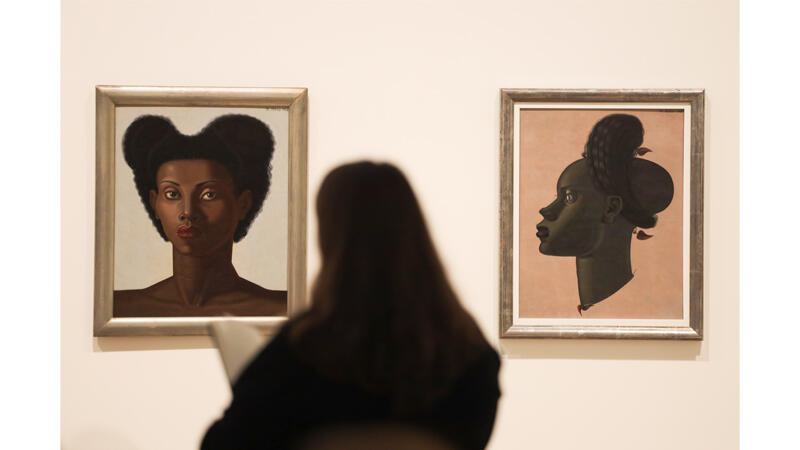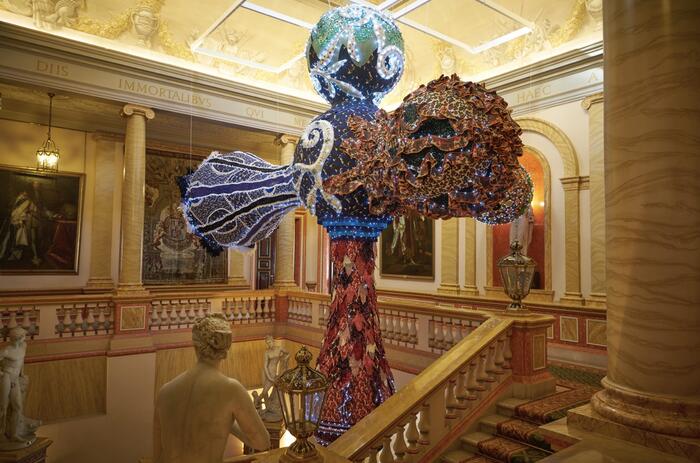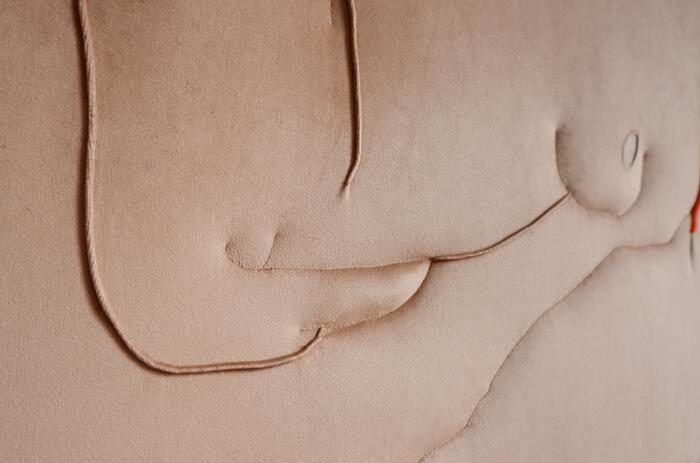THE VAST UNIVERSE OF MARUJA MALLO, IN SANTANDER
The Botin Center, in Santander, is hosting the exhibition Maruja Mallo: mascara y compás (Maruja Mallo: Mask and Compass), a show that vindicates, through a broad selection of works from her most relevant periods, the figure of Maruja Mallo (Vivero, Spain, 1902 – Madrid, Spain, 1995). This show elves into the legacy of the artist, a body of work which, like her own persona, has recently been the subject of revisions and visibility efforts to better integrate her trajectory into art historiography.

Mallo appears as a fundamental figure in her role as a pioneer of the European avant-garde and in its expansion throughout Spain and the peripheral movements in Latin America. A key artist alongside the literary figures of the Generation of '27 and a member of the Vallecas School, her presence within surrealism carried a key character that went beyond mere artistic practice, advocating for the construction of a female vision that broke with traditional roles in favor of greater personal and professional projection.
Her work is built primarily on human longing and on the world as a unique, interconnected universe, fully functioning thanks to an instrumental worldview of both knwon and unknown factors. Organized by the Fundación Botín and the Museo Reina Sofía and presented following a chronological scheme, the exhibition reviews some of her most iconic series where surrealism, magical realism, and fantasy all come together.
-
Maruja Mallo. Naturaleza Viva XII, 1943. Óleo, 42 x 33 cm. Colección particular
-
Maruja Mallo vestida de algas en la playa de El Tabo (Chile), 1945
-
Maruja Mallo. Canto de las espigas (Song of the wheat spikes), 1939. Óleo sobre lienzo, 118 x 133 cm
-
Maruja Mallo. El Mago/ Pim Pam Pum, 1926. Óleo sobre tabla, 60 × 74 cm
Within her Madrid period, the exhibited works from Verbenas and Estampas (1927–1928) stand out. Verbenas, one of Mallo’s first series—“magical creations of exact measurements,” as the artist defined them—depicts the people erasing their classifications in favor of undivided celebration, while Estampas kicks off the combination of different scenes and worlds, as well as a certain claim for the female figure beyond the urban role attributed to her at the time. Cloacas y campanarios (1929–1932) addresses the human figure as an apparent ghost, while in La religión del trabajo (1936–1939), Mallo pays tribute to those who work at sea and on land, elevating them to symbols of coexistence in a harmonious nature.
Her style begins to suffer the impact of exile with the perception of a new environment. She finds new landscapes in the idiosyncrasies of Latin America, discovered through her travels across the continent and during her residence between Montevideo and Buenos Aires. If in The Marine Series and The Terrestrial Series she finds a certain connection with the stars, in The Masks she immerses herself in religious syncretism and its figures. In Living Natures (1941–1944), she focuses on the organic within the oneiric, with figures that allude to the creation and origin of life—perhaps the most representative series of that moment.
-
Vista de sala de la exposición Maruja Mallo: Máscara y compás
In 1962, Maruja Mallo returned from exile to a still-Francoist Spain and began developing new languages. Inhabitants of the Void (c. 1968–1980) and Ether Travellers (1982) evoke characters of fiction and fantasy, which she makes her own, tracing an essential iconography of her work that would become her hallmark until the end.
Maruja Mallo: máscara y compás can be seen until September 14 at Centro Botín, Plaza de Emilio Botín, Santander (Spain).











